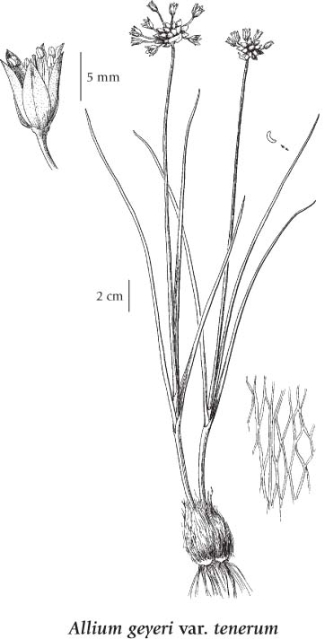Allium geyeri var. tenerum S. Watson M.E. Jones
Geyer's onion (bulbil onion)
Amaryllidaceae (Lily family)
(Previously in Liliaceae)
Introduction to Vascular Plants
Geyer's onion (bulbil onion)
Amaryllidaceae (Lily family)
(Previously in Liliaceae)
Introduction to Vascular Plants

